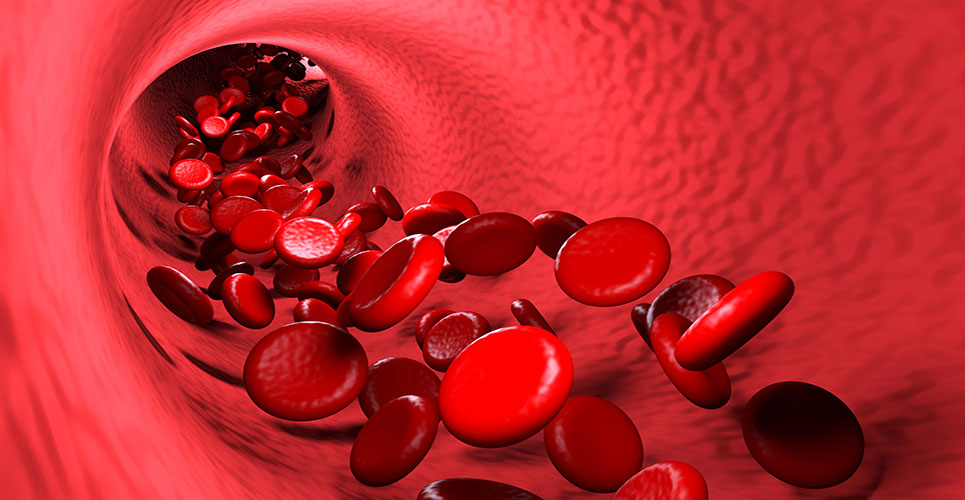Boehringer Ingelheim has announced the submission of an application to the European Medicines Agency (EMA) for use of dabigatran etexilate for the treatment of acute deep vein thrombosis (DVT) and pulmonary embolism (PE) and the prevention of recurrent DVT and PE.(1)
“The availability of novel oral anticoagulants for treatment and prevention of venous thromboembolism offers opportunities for changing care pathways with the added benefits of no requirement for routine coagulation monitoring.
Boehringer Ingelheim has announced the submission of an application to the European Medicines Agency (EMA) for use of dabigatran etexilate for the treatment of acute deep vein thrombosis (DVT) and pulmonary embolism (PE) and the prevention of recurrent DVT and PE.(1)
“The availability of novel oral anticoagulants for treatment and prevention of venous thromboembolism offers opportunities for changing care pathways with the added benefits of no requirement for routine coagulation monitoring. Combined with no known food interactions and few drug-drug interactions compared to warfarin, it simplifies long term anticoagulant treatment. The profile of a drug, such as dabigatran, with a lower risk of major or clinically relevant bleeding or any bleeding than warfarin during extended secondary prevention of VTE, potentially offers greater consideration for long term anticoagulant therapy in high risk patients.” said Trevor Baglin, Consultant Haematologist and Clinical Director, Cambridge University Hospitals NHS Foundation Trust.
“Dabigatran etexilate has a predictable anticoagulant effect, and phase III data indicate that it may be an alternative therapy to warfarin not only in the prevention of stroke in patients with atrial fibrillation, but also for patients with acute DVT and PE. We are convinced that, if licensed, this treatment option will assist the NHS in managing the vast number of patients estimated to be affected by this debilitating cardiovascular disease.” commented Dr Charles de Wet, UK Medical Director, Boehringer Ingelheim.
The EMA submission is based on the results of four global Phase III studies investigating the efficacy and safety of dabigatran etexilate in the treatment of acute DVT and PE and in secondary prevention of recurrent DVT and PE.(1-3)
The results of the studies versus warfarin have demonstrated dabigatran etexilate to be as effective as warfarin, with lower total bleeds and a similar profile of major bleeding for patients with DVT or PE.(1-3)
Rates of recurrent venous thromboembolism from three phase III studies comparing dabigatran with warfarin were:
- Dabigatran etexilate: 1.8%, warfarin: 1.3% (hazard ratio [HR] with dabigatran etexilate, 1.44; 95% confidence interval [CI], 0.78 to 2.64; p=0.01 for noninferiority).(1)
- Dabigatran etexilate: 2.4%, warfarin: 2.1%. (HR with dabigatran etexilate, 1.10; 95% CI, 0.65 to 1.84; p<0.001 for noninferiority).(2)
- Dabigatran etexilate: 2.4%, warfarin: 2.2% (HR for dabigatran etexilate, 1.08; 95% CI, 0.64 to 1.80; p<0.0001 for non-inferiority).(3)
Rates of bleeding were:
- Major bleeding: dabigatran etexilate: 0.9%, warfarin: 1.8% (HR, 0.52; 95% CI, 0.27 to 1.02; p=NS). Major or clinically relevant bleeding was less frequent with dabigatran etexilate (HR, 0.54; 95% CI, 0.41 to 0.71; p<0.001).(1)
- Major bleeding: dabigatran etexilate: 1.6%, warfarin: 1.9% (HR with dabigatran etexilate, 0.82; 95% CI, 0.45 to 1.48; p=NS). Episodes of any bleeding: dabigatran etexilate: 16.1%, warfarin: 21.9% (HR with dabigatran etexilate, 0.71; 95% CI, 0.59 to 0.85; p<0.001).(2)
- Major bleeding occurred in 1.2% of patients treated with dabigatran etexilate and 1.8% of patients treated with warfarin (HR 0.69; 95% CI, 0.36 to 1.32; p=NS) and any bleeding occurred in 16.4% of patients treated with dabigatran etexilate versus 23.3% in patients treated with warfarin, (HR 0.67, 95% CI, 0.56 to 0.81; p<0.001).(3)
In a fourth Phase III study, when compared to placebo, dabigatran etexilate prevented nine out of ten episodes of recurrent DVT and PE (dabigatran etexilate: 0.4%, placebo group: 5.6% [HR, 0.08; 95% CI, 0.02 to 0.25; p<0.001).(1)
Dabigatran etexilate is licensed in the UK for the prevention of stroke and systemic embolism in adult patients with non-valvular atrial fibrillation and one or more risk factors, and for the primary prevention of venous thromboembolic events in adult patients who have undergone elective total hip replacement or total knee replacement surgery.(4)
Dabigatran etexilate is currently not approved for the treatment of acute deep vein thrombosis (DVT) and pulmonary embolism (PE) and the prevention of recurrent DVT and PE.
References
- Schulman S, et al. Extended use of Dabigatran, Warfarin or Placebo in Venous Thromboembolism. N Engl J Med 2013; 368:709-718.
- Schulman S, Kearon C, Kakkar AK et al. Dabigatran versus Warfarin in the Treatment of Acute Venous Thromboembolism. N Engl J Med 2009; 361(24):2342-2352.
- Schulman S, et al. A Randomized Trial of Dabigatran Versus Warfarin in the Treatment of Acute Venous Thromboembolism (RE-COVER II). 2011;118. Oral presentation from Session 332: Antithrombotic Therapy 1. Presented on 12 December at the American Society of Haematology (ASH) Annual Meeting 2011. 2011.
- Pradaxa 150mg SPC. Available at: http://www.medicines.org.uk/emc/medicine/24839 Last accessed June 2013.
